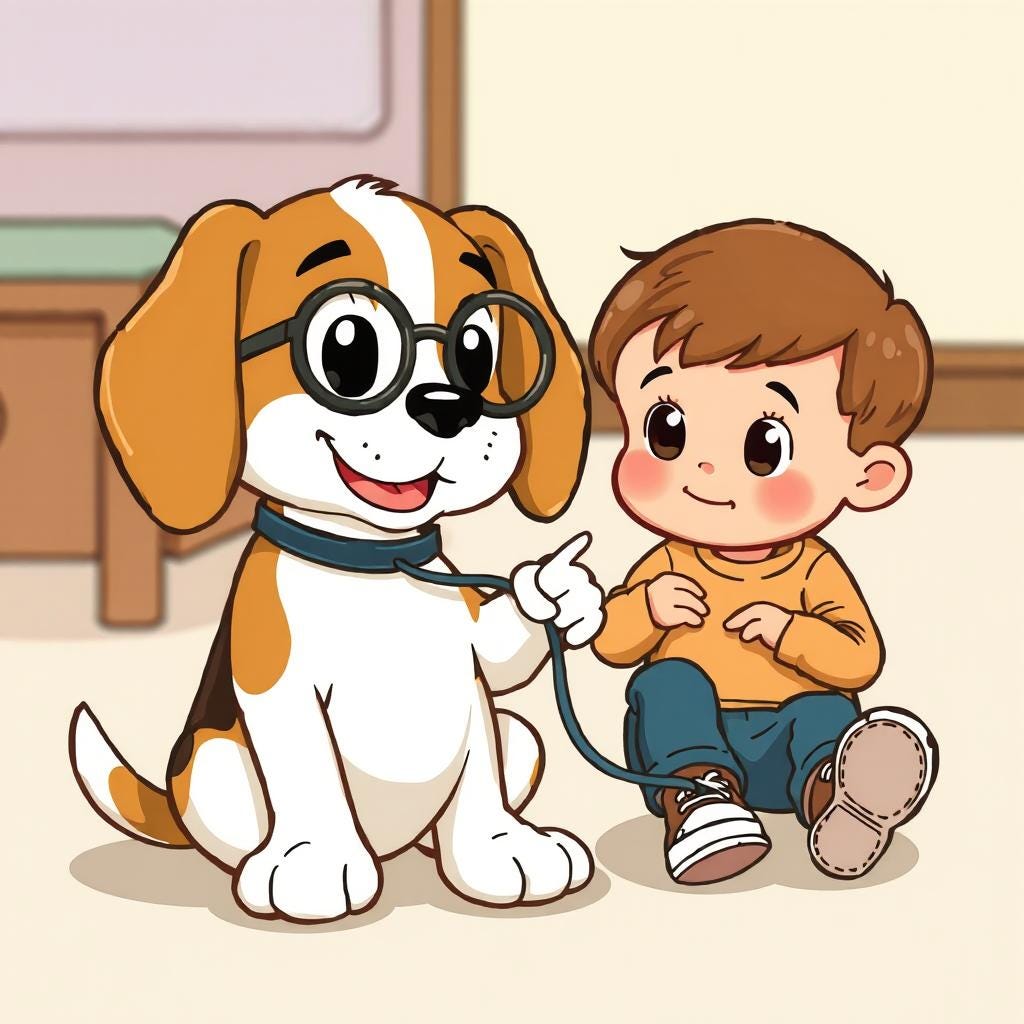Don’t Just Say It — 3 Techniques for “Show, Don’t Tell”
Learning how to "show" emotions
When I was a child I had a terrible time learning how to tie my shoes. If Velcro shoes would have existed then, I think I would have worn them for life. I just couldn’t seem to figure out how all the loops and swirls become a knot that looked pretty and held your shoe on. Exasperated, my mother said, “Look. There’s a river, then you make a tree, then a rabbit runs around the tree and goes in a hole, but then a hunter pulls it back out.”
WHAT?
I had no idea what she was talking about and ended up just slipping my feet in and out of tied shoes and asking my bestie at school to tie them for me if they came undone. She took pity on my one day and sat down beside me. She untied her shoe and mine and had me do it with her.
“Look - first twist the laces around one another and pull (the river), then take a string and make a big loop (the tree), then take the other string and wrap it around the loop and tuck it under (the rabbit) and pull both sides (the hunter).”
TADA!!! I finally learned to tie my shoe. My friend was able to help me because she didn’t tell me some abstract story and leave me to figure it out - she showed me exactly what I needed to know. I didn’t realize it then, but I had just encountered my first taste of “show, don’t tell.”
Why “Show, Don’t Tell” Matters
“Show, don’t tell” is one of the most tossed-around phrases in the writing world—and honestly, it’s both essential and infuriating. Everyone says it. Few explain how to do it.
Let’s fix that.
Below are three tried-and-true techniques to help you show emotion, tone, and truth in your writing—each with beginner and advanced examples, plus one classic pitfall to watch out for.
1. Visual Cues
We often show emotions through known physical reactions. These visual cues help readers feel a character’s experience without having it spelled out.
Telling:
Joey was disappointed by Coach’s decision.
Susan was surprised by her present.
Early Writing:
Joey slumped his shoulders and walked away.
Susan’s mouth dropped open when she saw her present.
Advanced Writing:
Joey turned, his shoulders folding under the weight of his crushed expectations.
Susan’s face lit up like the sun through an open window—eyes wide, jaw slack, wonder blooming.
⚠️ Pitfall: Overusing the same visual cue becomes laughable. An agent once told me, “If he raises his eyebrows one more time, I’m going to think he has a nervous disorder.” Vary your visuals.
2. Associations
In every culture, certain images carry emotional weight. Tapping into shared associations lets you show emotion with shorthand that resonates.
Telling:
Being in love with Joey was exhilarating.
Without her mom, Susan felt helpless.
Early Writing:
Loving Joey was like a sugar rush.
Susan was a lost sheep without a shepherd.
Advanced Writing:
Loving him was red. (Taylor Swift—we’re getting there.)
Without her mom’s steady love, Susan was a balloon without a string.
⚠️ Pitfall: Associations aren’t universal. In many Western cultures, red suggests passion and wild love. But in parts of Eastern Europe, especially within Orthodox traditions, red symbolizes blood, martyrdom, and sacrifice. Know your audience. Don’t make your readers feel like the metaphor’s playing in a language they don’t speak.
3. Metaphor
Metaphors are magic. Unlike similes, they drop the filter words (“like,” “as”) and let the emotion speak directly. They’re show-stoppers when done well.
Telling:
Joey was so confused he didn’t know what to do.
Susan was so angry she felt like she might explode.
Early Writing:
Joey was a spinning top.
Susan was a volcano ready to blow.
Advanced Writing:
Joey was a child tumbling down a cliff, grasping for any branch that might steady him—but there were none.
Susan was a cauldron, bubbling with a bitter broth of rage and regret.
⚠️ Pitfall: Too many metaphors back to back feel like a poetry slam on fast-forward. And mixed metaphors? Reader whiplash.
She was a candle in the wind trying to climb the corporate ladder.
That poor candle. Just trying to make manager before it melts. 🕯️💼
A Masterclass in Metaphor: Taylor Swift
Whether you’re a fan or not, Taylor Swift is a metaphor maestro.
"You're a flashback in a film reel on the one screen in my town." (This Is Me Trying)
“Cold was the steel of my axe to grind.” (Invisible String)
“He’s the song in the car I keep singing.” (Teardrops on My Guitar)
These are elegant, emotional, and they show instead of saying, “I’m heartbroken” or “I’m angry.” That’s the power of metaphor done right.
So… How Do You Learn to Show?
Read. Write. Revise. Play with imagery. Borrow from movies, music, emotions, and your own shoelace fumbles. Try it, tweak it, and tie it up again.
Because one day, you’ll hit the page just right—and the knot will hold.


